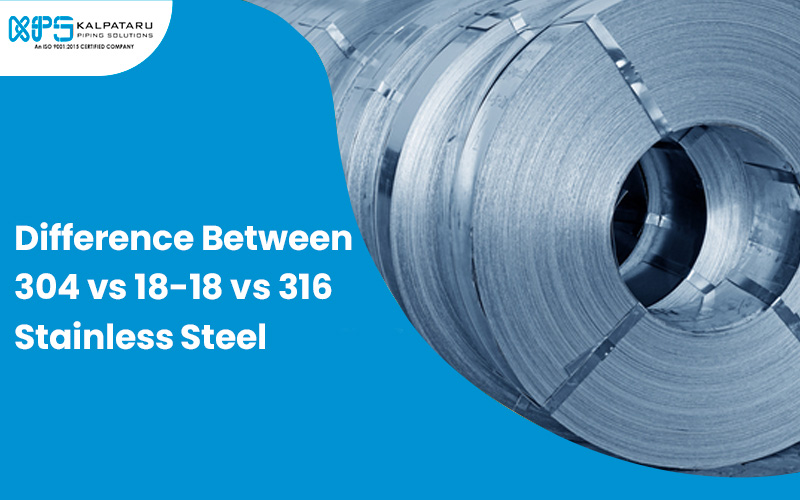When dealing with stainless steel, it becomes imperative to distinguish between the various grades, such as 18-8, 304, and 316, particularly in relation to their suitability for different applications. It’s essential to ensure that the chosen grade aligns with the demands of the intended working environment. Let’s delve into the nuances of these grades while keeping in mind that, fundamentally, both 18-8 and 304 share identical chemical compositions; their suitability depends on specific applications.
Understanding Grade 18-8/304 and Its Attributes
Both 18-8 stainless steel and 304 stainless steel exhibit the same chemical composition. The nomenclature “18-8” denotes their makeup, consisting of 18% chromium and 8% nickel. This cost-effective variant finds its niche in commercial food processing, refrigeration, and dishwashing applications due to its commendable resistance to corrosion. The 304 grade serves as a general-purpose grade, but there are two notable subgrades within this category. Firstly, the 304L, characterized by its low carbon content, can withstand moderately high temperatures. Secondly, the 304H, a high carbon grade, boasts exceptional tolerance for extreme temperatures.
It’s worth noting that machining the 304/18-8 grades often necessitates specialized tools compared to lower-grade stainless steel options.
18-8 Stainless Steel Advantages and Disadvantages
18-8 grade stainless steel has garnered acclaim for its remarkable resistance to corrosion. However, it does exhibit vulnerability to corrosion when exposed to chlorides, such as saltwater. Consequently, it may not be the optimal choice for applications in marine environments. On a positive note, 18-8 grade stainless steel boasts properties that allow for easy bending and shaping without compromising its overall strength and durability. This particular type of stainless steel is not only highly cost-effective but also demands minimal maintenance. Furthermore, it demonstrates an impressive yield strength.
Applications of 18-8 Stainless Steel
Within various industries, 18-8 grade stainless steel finds versatile applications. It is commonly employed in sectors such as wastewater treatment, restaurant and catering, medical, and transportation. However, it is worth noting that it is unsuitable for use in marine settings.
304 Stainless Steel Pros and Cons
304 stainless steel offers a range of advantages that position it as a prominent choice within the realm of mild steels. Its notable strength sets it apart as a reliable material for diverse applications. Additionally, it exhibits commendable resistance to corrosion, making it an appealing option. When compared to its counterpart, 316 stainless steel, 304 stainless steel stands out as being more malleable and easier to shape. Nevertheless, it’s crucial to acknowledge that, similar to 18-8 grade stainless steel, 304 stainless steel is susceptible to corrosion when exposed to saline environments.
Applications of 304 Stainless Steel
The versatility of 304 stainless steel finds widespread application in the manufacturing of various products, including but not limited to sinks, pots, pans, and tables, among others. This material’s adaptability and durability render it a favored choice in industries such as dairy, food processing, and brewing.
316 Stainless Steel Advantages
The chemical composition of 316 stainless steel differs somewhat from that of 304. SS 316 comprises 16% chromium, 10% nickel, and trace amounts of other elements. Within the realm of 316 stainless steel, various iterations exist. For instance, there is the 316L, known for its low carbon content. Additionally, the 316F represents a free machining grade, while the 316N is a high nitrogen grade. These variants are particularly well-suited for marine environments or areas with elevated salinity levels.
One distinguishing feature of 316 stainless steel is its superior strength in comparison to 304 stainless steel. It offers exceptional resistance against corrosion, as previously mentioned, and provides protection against pitting and damage caused by caustic chemicals. These attributes make it a preferred choice for applications in refineries, chemical processing, and storage facilities, and it performs admirably in marine environments.
As always, it is crucial to meticulously select the appropriate product that aligns with the specific demands of the working environment. This selection process should factor in considerations of budget and intended application to ensure prolonged performance and structural integrity.

